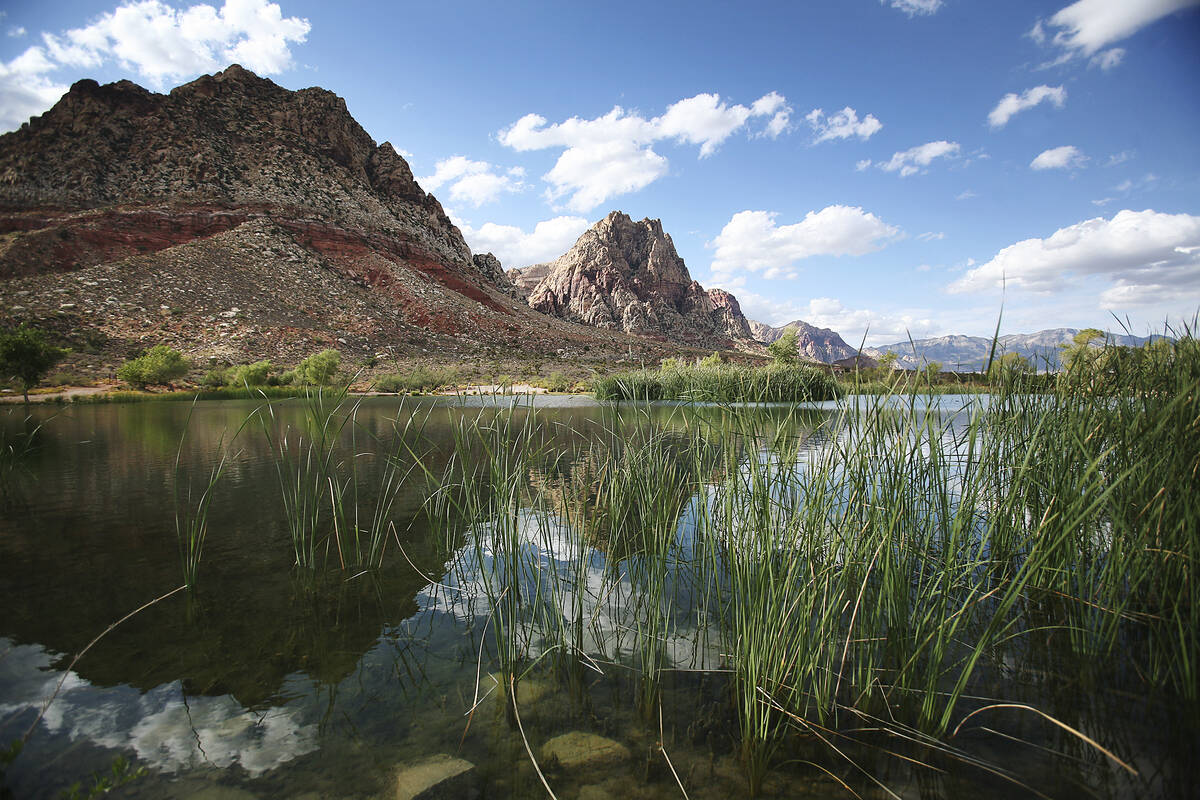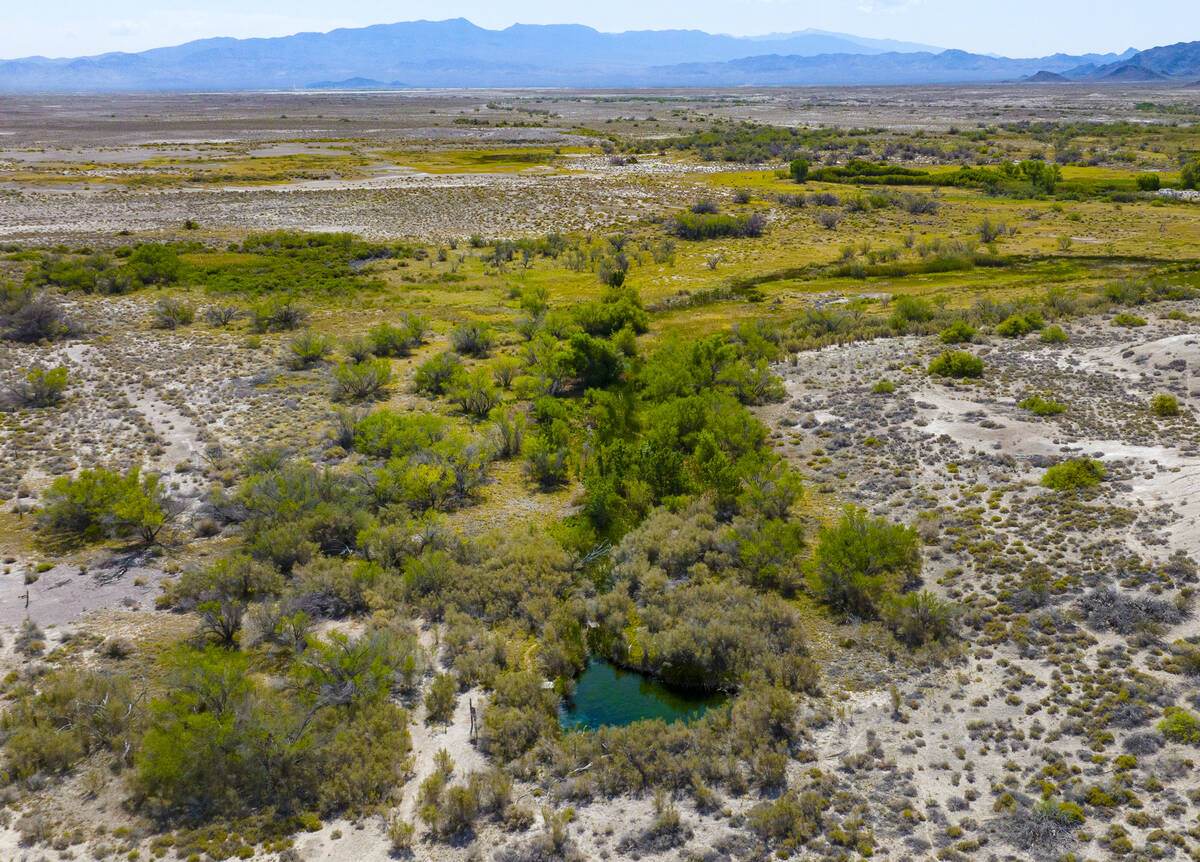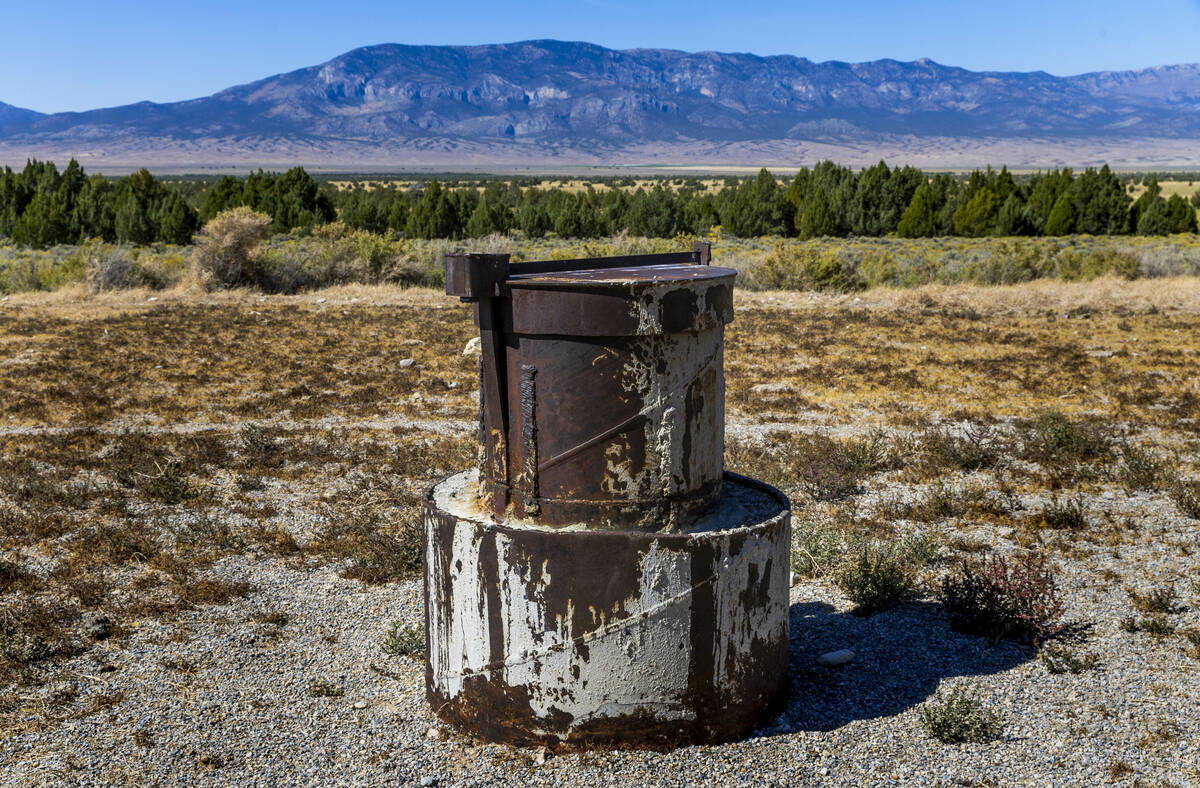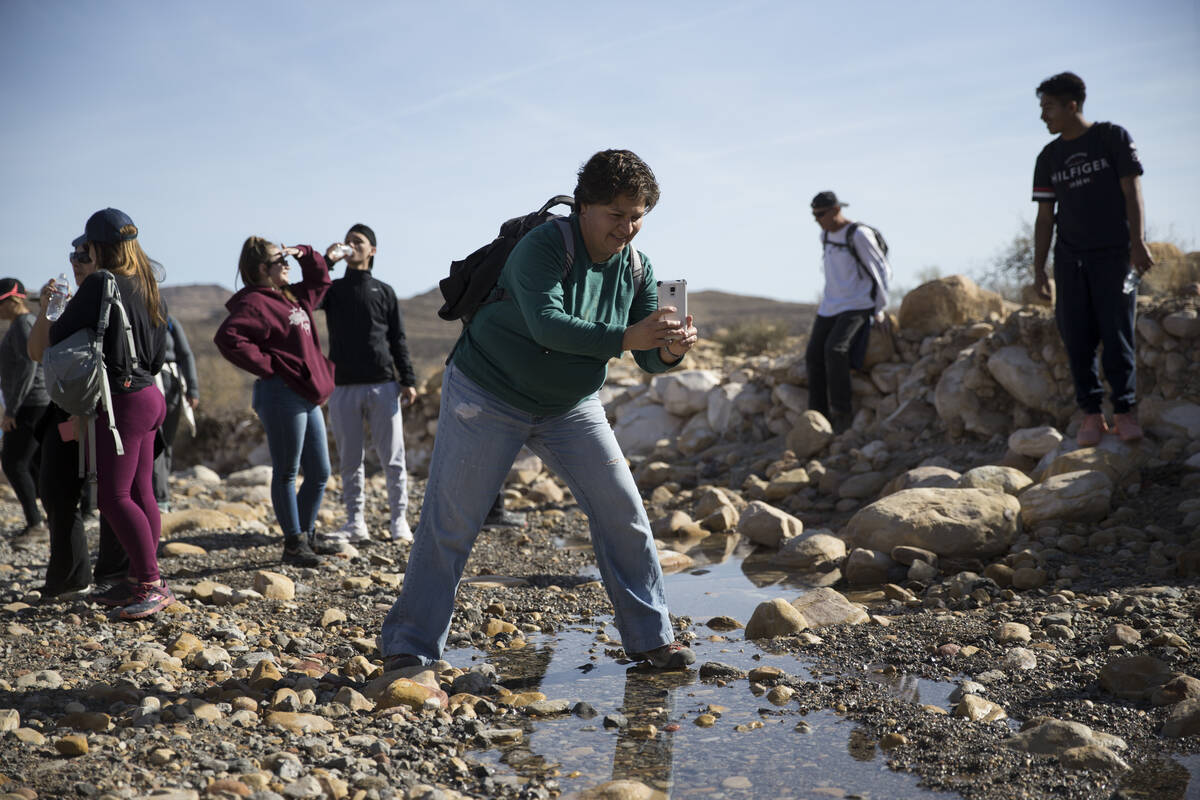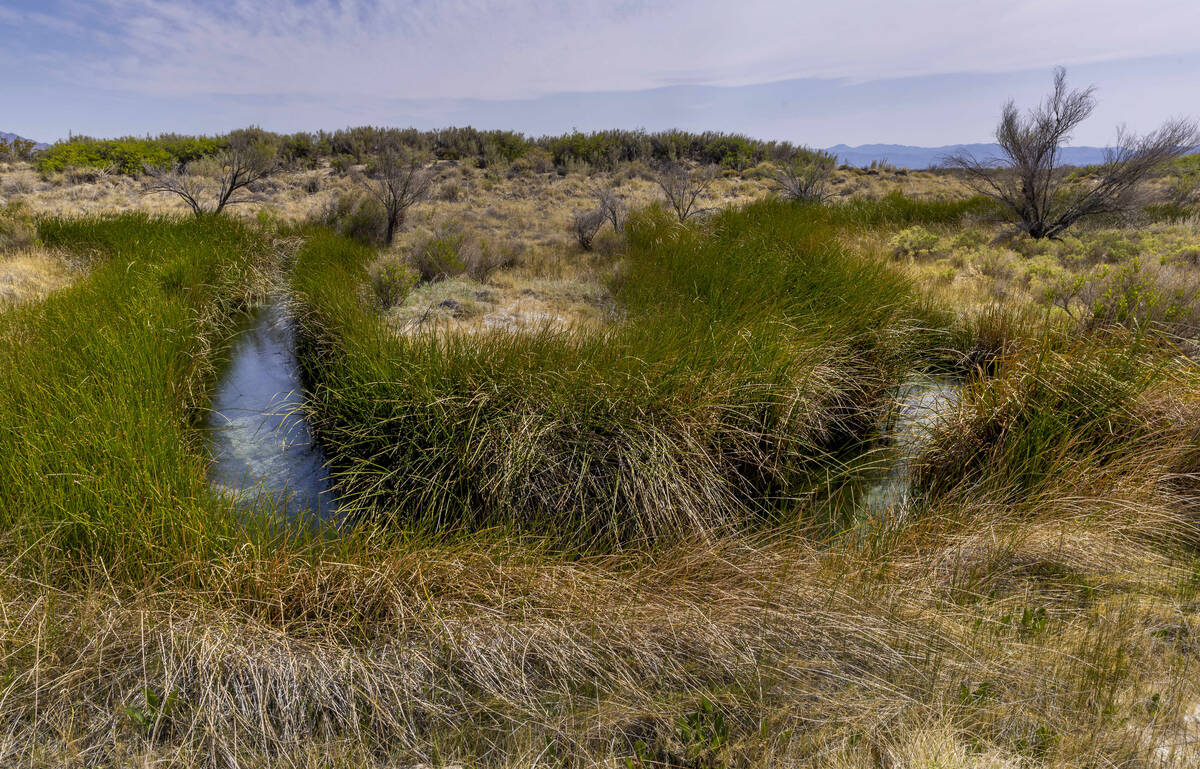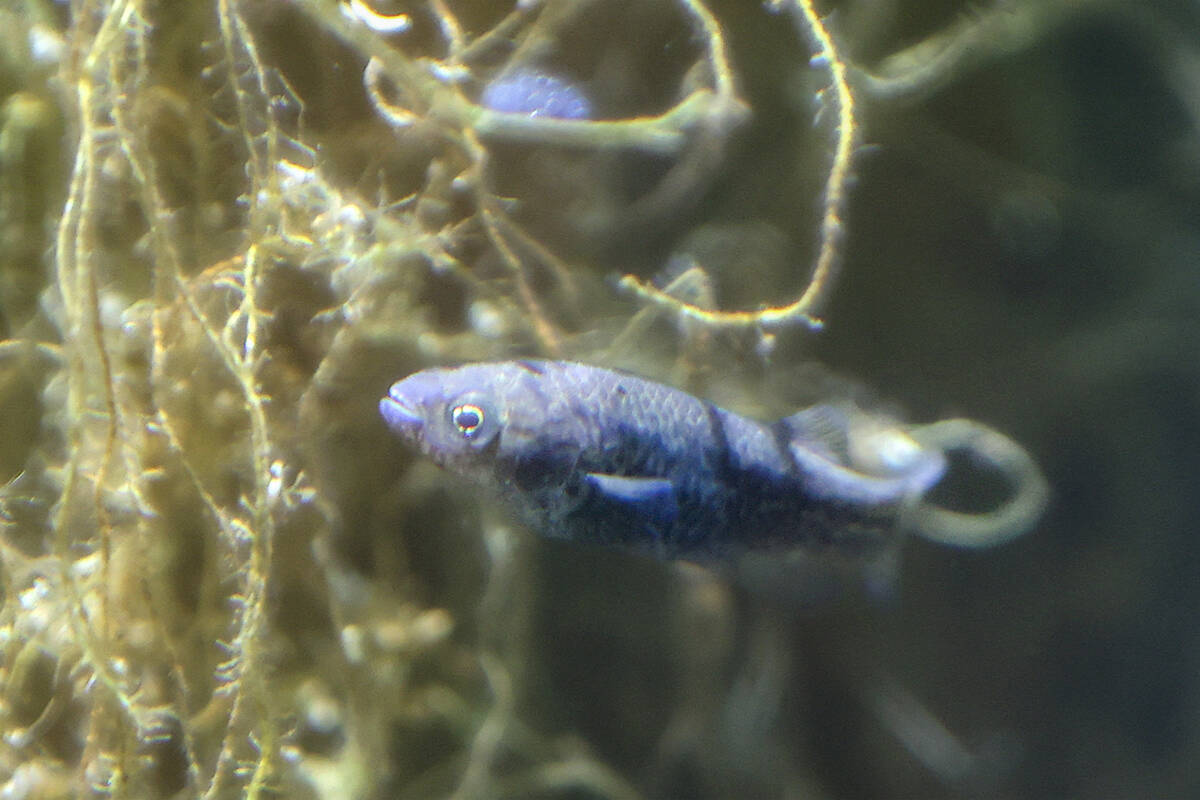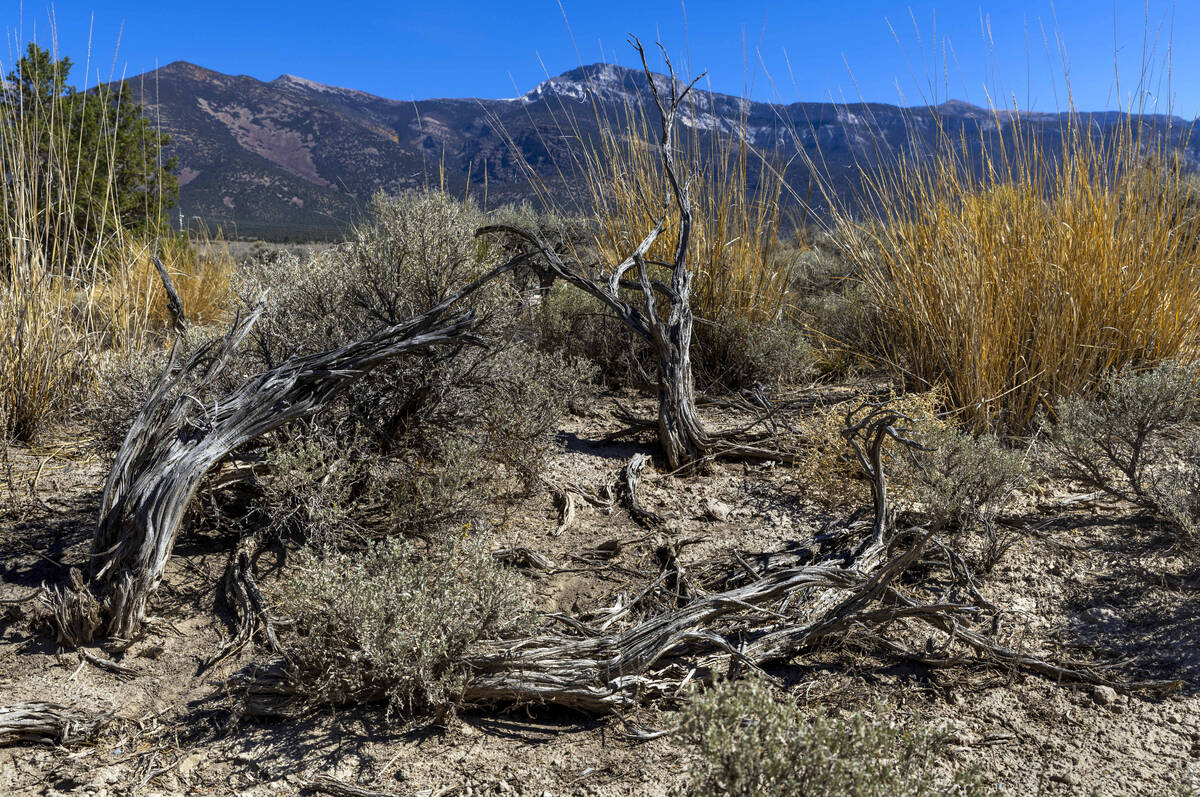The unseen water crisis beneath Nevadans’ feet: disappearing groundwater
The water beneath our feet is vanishing, putting people, plants and animals at risk in the Nevada desert.
An August study published in the academic journal Hydrological Processes uses publicly available data to paint a dismal picture of Nevada’s groundwater wells.
About 40 percent of the more than 6,500 wells analyzed show sharp declines in water levels — a concerning fact as projections of elevated temperatures worsen drought throughout the state.
“Groundwater is really tricky,” said Laurel Saito, The Nature Conservancy’s Nevada water strategy director and lead author of the study. “People don’t usually think about it or even know that it’s there. That also makes it tricky to manage, because it’s hard to tell sometimes if we’re using more of it than is being replenished.”
The study makes a case for protecting groundwater-dependent ecosystems, or GDEs, the lush green pockets of desert near freshwater springs that are often lifelines for endangered species. Some spots that may ring a bell for Las Vegas residents include parts of Spring Mountain Ranch State Park and Ash Meadows National Wildlife Refuge.
“A lot of our GDEs are adapted to survive through drought, so they can still be there on the surface and looking like they’re hanging on,” Saito said. “But there is a threshold where they’re going to decline and really struggle to come back.”
‘An economic paradox’
One of the maps produced for the study looks at climate change models to determine how weather conditions could drive declines further.
The study differentiates between short and long groundwater flow paths. Shorter flow paths — at the greatest near-term risk from climate change — are those where groundwater is depleted more quickly.
Many of these short flow paths are concentrated in Southern Nevada, said Dan McEvoy, a study co-author and Desert Research Institute researcher with the Western Regional Climate Center.
“It’s expected that droughts will become more frequent and more severe by the middle of the century, largely driven by increases in temperature as opposed to decreases in precipitation,” McEvoy said.
Study authors warn that declining groundwater will harm struggling species and increase habitat displacement — as seen with the Pahrump poolfish, which biologists have relocated from drying springs more than once.
For rural Nevadans, groundwater availability drives life in the desert. It can cost tens of thousands of dollars for homeowners to drill wells deeper on their property to meet the lowering water table.
Rosemary Carroll, a Desert Research Institute hydrology researcher who didn’t work on the study, said the findings of the paper weren’t necessarily surprising. However, she said the study underscores the need for more comprehensive management of groundwater.
Groundwater’s outsized role in the economy cannot be overstated, Carroll said, with an importance to industries such as mining and agriculture.
But Carroll said protection of water resources always comes at a cost. With agriculture, for instance, moving away from water-intensive methods such as flood irrigation can contribute to groundwater loss, because water isn’t seeping back into the ground.
“It’s an economic paradox,” Carroll said.
A focus on policy, management
The paper takes its findings a step further to make recommendations for changes in policy and management.
Those points are broad, such as ensuring that GDEs are taken into consideration when the state engineer approves water rights applications or that the Bureau of Land Management considers them in permitting projects such as new mines.
“What fits in the public interest is not well defined,” Saito said. “GDEs probably fit in there, but it’s not explicitly stated as such.”
In a statement, a spokesperson for the Nevada Division of Water Resources said the legal requirement that the state engineer make decisions in the public interest includes wildlife considerations. Nevada law recognizes that water rights can be used to protect wildlife, and it requires protection of springs in which wildlife live, as well.
“The Division is always willing to participate in the discussion as to how to make these statutory provisions most effective in achieving their purpose without causing undue harm,” said the spokesperson, Jenny Jackson, adding that scientific research like this study is always a helpful addition.
As the driest state in the nation, Nevada has made some strides in protecting groundwater. Saito pointed to Gov. Joe Lombardo signing a bill to create a groundwater rights retirement program, meant to pay those with water rights to permanently give them back to the state. However, it has failed to secure any funding so far.
If the state finds its economy in a better position, advocates may ask for an appropriation during the next session, Saito said.
A 2024 Nevada Supreme Court decision involving the Coyote Springs development outside Las Vegas also has set a precedent that allows the state’s top water regulator to consider how divided hydrological basins may affect one another — as well as the connection between groundwater and surface water.
Carroll, the researcher who didn’t contribute to the study, said it’s vital for the everyday Nevadan to pay attention to groundwater — because of its tie to water on the surface.
She pointed to the canary-in-the-coal-mine analogy as a reason to pay attention to the effects of groundwater loss, such as extinction of species. The effects of drought multiply.
“It’s not necessarily about the canary,” Carroll said. “Care about the canary; I do. But if you don’t care about the canary, know that it’s a signal that things are shifting. That’s problematic for not just the canary.”
Contact Alan Halaly at ahalaly@reviewjournal.com. Follow @AlanHalaly on X.



